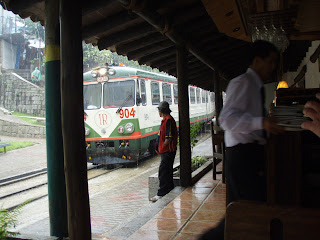Conchacalle

Mary, with one of the schoolboys along the path up to the village.
The children were very happy, friendly and welcoming.
The children were very happy, friendly and welcoming.
The school's head teacher, Odolon, with Millie, the Peruvian WAWA co-ordinator.
The children enjoy the mangoes, but only after being supervised
in washing them under the school tap.
Last year's new buildings for the school
Projects board with photos and architect's plans.
Mary and Millie with some of the pupils. The children were
on holiday, but a good number of them met us on the day.
Photos of previous project, restoration of the very unsafe and unusable buildings.
WAWA helped with converting what was previously a rudimentary greenhouse,
into the Catherine Anderson Memorial Building, which is now the largest
classroom for the school. It also doubles as a much-valued community hall.
WAWA helped with converting what was previously a rudimentary greenhouse,
into the Catherine Anderson Memorial Building, which is now the largest
classroom for the school. It also doubles as a much-valued community hall.
Same
Inside the Catherine Anderson Memorial building. They still had
the Nativity displayon show at the end of January!
the Nativity displayon show at the end of January!
 |
| Relaxation ... |
... and weaving lessons.
View across valley - even at this altitude and wet environment for much of the year,
they use adobe mud bricks - see the stack beyond our canine friend.
Another recent classroom provided by WAWA
 |
Musical instruments provided by WAWA
An impromptu 'concert'
This octagonal building at the top of the slope was built originally
by visiting nuns 'to allow the locals to admire the view'(!)
WAWA converted it into a pre-school classroom.
We were honoured to join Odolon and some of the parents to potatoes ...
... and roast guineapig.
Part of the nuns' viewpoint, converted into the school playground.
Mary and Chris with 4 of last year's 5 scholarship students, who now
attend the senior school in Cusco, 14 Km away. They walk there and
back each day.Most of the pupils have no chance of further education
because of the expense as well as the geography.
Off to the next school ...
village church on the right.































































